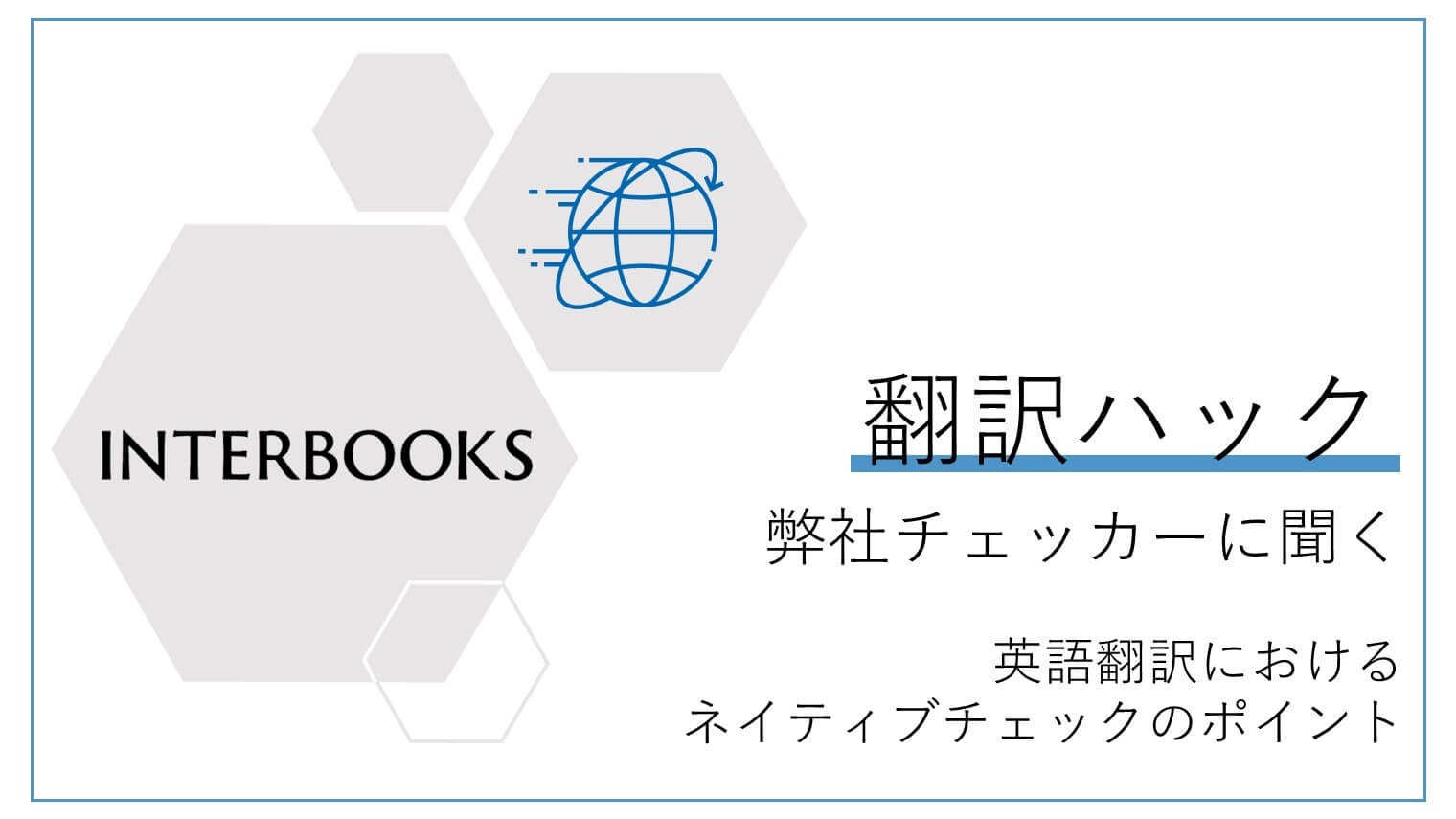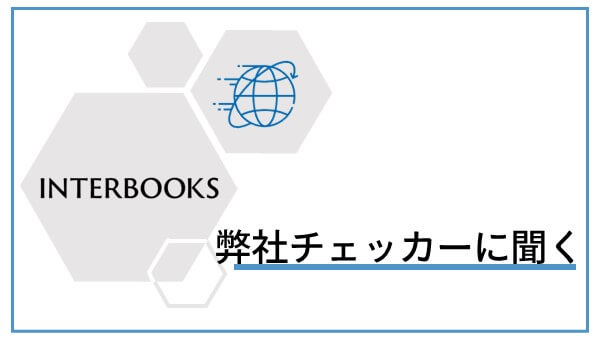- 2025.04.01更新
- スタッフブログ
弊社チェッカーに聞く~英語翻訳におけるネイティブチェックのポイント

インターブックスでは80言語以上の翻訳サービスを提供しております。
今日はその中から「英語翻訳」について、弊社の翻訳チェッカーに英語翻訳におけるネイティブチェック作業の際に気を付けていることについて聞いてみました。
When carrying out native checks on documents translated by non-native speakers, there are several things to keep an eye out for. In the case of translating from Japanese to English, similar patterns crop up again and again, so it is important to learn these patterns and look out for them.
First is word choice. Words often have multiple meanings, however those meanings rarely overlap one-to-one with those of corresponding words in other languages, particularly if the languages do not share a common ancestry. We can see this with the Japanese verb 確認する (kakunin suru), which can mean, variously, to check, to confirm, to verify, to identify, and more in English. In the sentence, “It may be necessary for us to verify your identity by checking your ID or similar,” “verify” means to make sure that something is true or accurate, so it makes sense in the context of confirming that someone is who they say they are using some kind of proof. Meanwhile, “check” has the meaning of to look up or to reference something, so when talking about looking at the details on someone’s identification card, “check” is more appropriate. These small differences in meaning may not seem like much, but they can make a huge difference in readability and understanding for native speakers.
Another important thing to be aware of is “false friends.” These are words in different languages that look the same but have very different meanings. Japanese has many of these false friends, which overlap significantly with wasei eigo, or “Japanese-made English.” An example of this is the Japanese word ハンドル (handoru), which is often translated incorrectly as “handle,” but actually refers to the steering wheel in a vehicle. Such a mistake may be overlooked by Japanese and English native speakers alike, so being on the alert for these kinds of errors is crucial.
ネイティブ以外が翻訳した文書のネイティブチェックを行う場合、注意しなければならない点がいくつかあります。日本語から英語への翻訳の場合、類似パターンがあるのでそれらを把握して意識することが大切です。
まず、単語の選び方です。ひとつの単語に複数の意味があることはよくあります。その意味が他の言語の対応する単語と一対一で重なることは、特に祖先が共通でない言語ではほとんどありません。日本語の「確認する」という動詞は、英単語では「確認する」「検証する」「識別する」など、さまざまな側面を持っています。”It may be necessary for us to verify your identity by checking your ID or similar “という文章で、”verify “は、何かが真実であること、正確であることを確認するという意味なので、ある種の証拠をもって、誰かがその人であることを確認するという文脈で通じます。
一方、”check “は「調べる」「参照する」という意味なので、身分証明書に記載されていることの詳細を確認する場合は、”check “の方が適切です。このような小さな意味の違いは、大したことではないと思われるかもしれませんが、ネイティブスピーカーにとっては、読みやすさや理解度に大きな違いがあります。
もう一つ気をつけたいのが、”false friend (空似言葉)”です。これは、同じように見えても意味が大きく異なる、他言語の言葉のことです。日本語にはこの「空似言葉」が多く、「和製英語」とも重なります。
例えば、「handle」(取っ手)と間違って訳されがちな「ハンドル」は、車のハンドル(”steering wheel”)のことを指しています。このような誤りは、日本語を母語とする人も英語を母語とする人も見落としてしまう可能性があるので、注意することが大切です。
■ インターブックスの英語翻訳はこちら
■ インターブックスの実績紹介はこちら
| 書いた人 | 翻訳チェッカー課 W |
| イギリス出身。ロンドン大学にて日本語学を専攻。卒業後、航空会社や出版社を経て翻訳業界に飛び込む。趣味は読書、レコード収集・鑑賞、キャンプ。 |
関連記事

